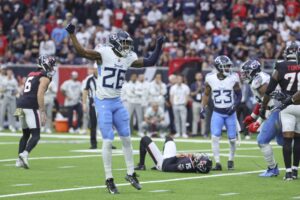Across the board, television is becoming less and less popular. Whether it’s new programs, sitcoms, sports, or just re-runs of classic movies, audiences are finding new ways to enjoy their favorite digital programming. That is, except for the Super Bowl. Each and every year, more and more people tune in to enjoy the winner-takes-all battle to decide the champion of America’s favorite sport.
The Super Bowl: America’s Most Beloved Game
In an era where just about ad revenue is increasingly rare, the Super Bowl still manages to charge more and more for 30 seconds of air time – and brands are fighting for the privilege of getting their time on the air.


This infographic was provided by Betway NFL Betting
As you can see from the infographic below, the Super Bowl is easily the most expensive timeslot for any of the major sporting events. The price is still rising on an annual basis, as 2020’s $5.6 million per 30 seconds is almost 7% higher than 2019’s $5.25 million.
The reason for the continued financial value is obvious, according to former advertising specialist Doug Gould. Gould spent 34 years climbing the ranks of the advertising industry and earned two awards for Budweiser commercials. Part of the reason for the sustained success is that the commercials have become just as big as the game itself for a certain percentage of viewers. According to Gould, “[the advertisers] looked at the number of human beings who were watching this event and they said: ‘we have this many eyeballs at once…we should do something big.”
Gould goes on to add that the prestige of having a Super Bowl ad alone drives up the price even with the increased popularity of streaming services. “It’s that human element: the desire, the need to be seen, and paying for the most important real estate for the sake of saying you were there.”
This desire for attention, high viewership, and overall scope led to Super Bowl timeslots selling out faster than ever before. Despite overall TV advertising decreasing by 3% in 2019, Fox managed to sell all of its Super Bowl timeslots in mid-November. By comparison, these timeslots normally sell out in December or early January. Even with the increased prices, America’s love affair with the game of football makes these brands want to haul out big dollars for America’s most beloved sporting event.
If a company is going to make this type of investment in a 30-second span, you know they’re going to make it the best 30 seconds they can. Making an impression when everyone else is trying to do the exact same thing is hard because every company buying ad space is desperately trying to make the best ad possible.
Gould states that the best way to be remembered is to “zig when everybody else is zagging.” Trying to make something that’s “not like part of the group” but still maintains entertainment value is the key to seeing a return on your investment.
One of the most interesting ads in the upcoming Super Bowl will undoubtedly belong to President Donald Trump. The Commander in Chief purchased a 60-second spot in the upcoming game, becoming the first politician to advertise during the Super Bowl, according to Gould. Not to be outdone, Democratic Presidential hopeful Michael Bloomberg bought a 60-second ad of his own during the game.
This isn’t the first time politics has hit a major sporting event (the 1936 and 1980 Olympics), but it’s the first time it’s hit the Super Bowl. These two are advertising something far more important than beer or hot wings, so clearly they feel this $10 million dollar investment is worth it. Hauling out this much money for a political campaign normally isn’t worth it, but the Super Bowl offers a unique experience where every advertiser – political and otherwise – knows they have a captive audience.
Main photo:
Embed from Getty Images






